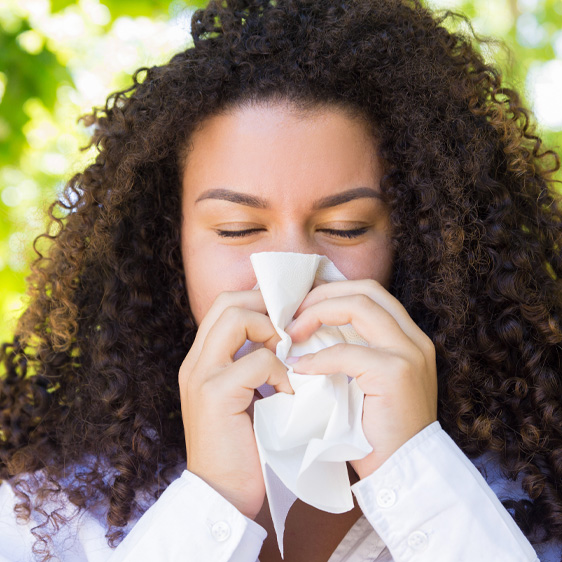
For most of the country, a coating of fine green and yellow powder settling on outdoor surfaces heralds the beginning of spring. Here in the Lowcountry, however, we get to experience pollen nearly year-round — as early as February and as late as November.
In our area, it’s generally pollen from oak and bayberry trees that causes misery for people with tree pollen allergies — surprisingly, not the ubiquitous pine pollen. Less seasonal and more year-round, mold is another common allergen that brings misery in the spring. It is found in leaves, straw and areas of heavy vegetation. Mold loves moisture and grows best in warm, humid conditions, indoors and out.
Seasonal Allergy Prevention
“It’s difficult to tell with fluctuating weather when allergy season will officially start,” says Erin R. Scott, ANP-BC, nurse practitioner at Beaufort Memorial Lowcountry Medical Group. “But if allergy symptoms develop earlier than normal, people may need to be prepared for a stronger allergy season.”
If every season feels like “allergy season” for you, you’re not alone. An estimated two-thirds of spring allergy sufferers have year-round symptoms. But there are ways to reduce — and even eliminate — the suffering.
1. Avoid pollen exposure.
- Be aware that some pollens contain proteins similar to those found in common fruits and vegetables — and eating those can trigger a condition called oral allergy syndrome. Possible culprits include bananas, melons, cucumbers, zucchini, sunflower seeds and chamomile tea.
- Check pollen counts daily and tailor your activities accordingly. When counts are high — typically on dry, windy days — minimize time outside. Exercise outside when pollen counts are lowest (usually early and late in the day, though times vary by pollen type.) “Also, rainy days can help wash allergens away,” Scott says. “It’s a good idea to check weather forecasts, which can also include pollen counts for the day.”
- Wear sunglasses and a protective mask while gardening or working outside.
- Exercise outside when pollen counts are lowest (usually early and late in the day, though times vary by pollen type).
- Don’t bring pollen inside. “Shower, wash your hair and change your clothes after time outside, and rinse the dog off, too,” Scott says.
- Keep windows and doors closed in your house and car.
- Run your air conditioning.
- Use a vacuum with a HEPA filter.
2. Keep inside moisture in check.
- To reduce mold indoors, install exhaust fans in bathrooms, kitchens and laundry rooms. Vent them—and appliances like clothes dryers and stoves that produce moisture—to the outside.
- Take shorter showers.
- Use a dehumidifier.
- Keep indoor humidity levels to the Environmental Protection Agency’s recommended 30%–60%. If it’s too high, you might notice condensation on windows, pipes and walls.
- Dry any damp areas you find in the house (cabinets under sinks, for example) immediately.
- Ensure your gutters are clean and in good repair so they channel rain away from your house.
3. Try over-the-counter medication.
- Over-the-counter oral antihistamines and nasal sprays can greatly reduce allergy symptoms. Be sure to follow dosing directions carefully.
4. Visit a professional.
- When self-help measures fail to work, see a primary care provider. He or she may recommend an allergist, a doctor who specializes in treating allergies and asthma. An allergist will likely use a series of blood and skin tests to identify the exact allergens that cause your reactions, then prescribe medication or immunotherapy in the form of regular allergy shots or under-the-tongue tablets that contain small amounts of the allergens. Repeated exposure will eventually reduce your sensitivity to them.
- Download the BMH Care Anywhere app. If you need relief quickly, a board-certified provider can discuss your symptoms with you on your phone, tablet or computer.
Be ready for allergy season. Find a primary care provider who can help you manage your allergies. These providers are accepting new patients.
